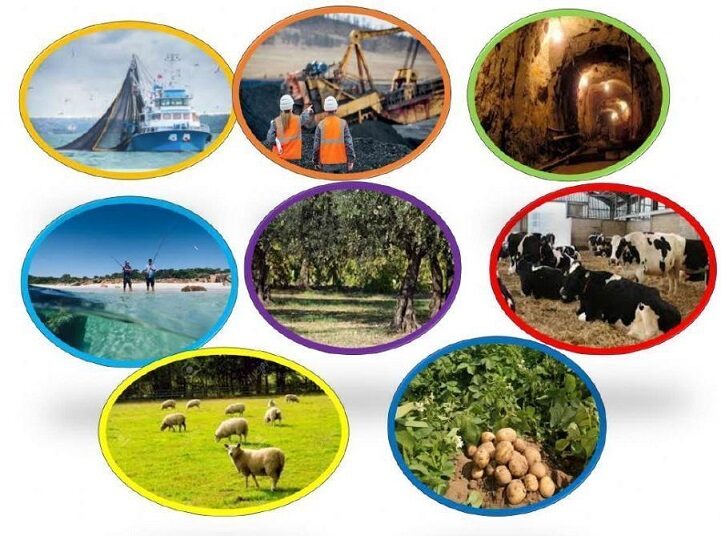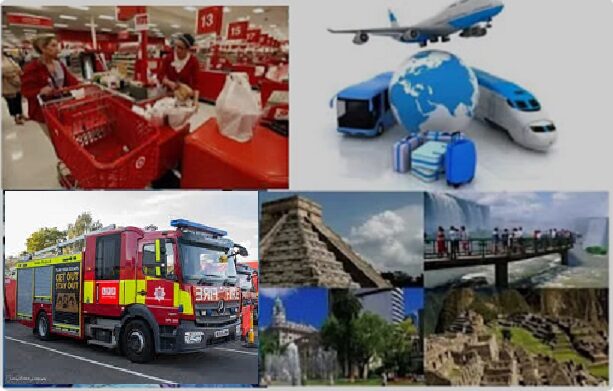PRIMARY SECTOR
Primary sector industries are responsible for extracting natural resources (land/raw materials) which can be used by other organisations to produce goods and services.
Examples of primary industries: oil exploration, mining, fishing, farming, forestry.
SECONDARY SECTOR
Secondary industries take the raw materials extracted in the primary sector and they use them to manufacture goods
Examples – electrical goods, food, clothing etc. Construction is also a secondary industry – eg road building, house building.
TERTIARY SECTOR
Tertiary industries are service sector industries which distribute and sell finished goods manufactured in the secondary industry eg road haulage, retailing.
Other examples of tertiary sector services include – gas, electricity, telephone, internet services, health, education, holidays, tourism etc.
Wealth Creation / Value Added
- Goods pass along a chain of production. Primary industries extract raw materials which secondary industries use to manufacture goods. Finished products pass to tertiary sector for distribution and selling.
- The wealth of a country is measured by the value of goods and services produced. More business activity means greater value of goods and services produced, and greater wealth of the country.
- As goods move to the next stage in a production chain, value will be added. The value added is the measure of increased wealth.





